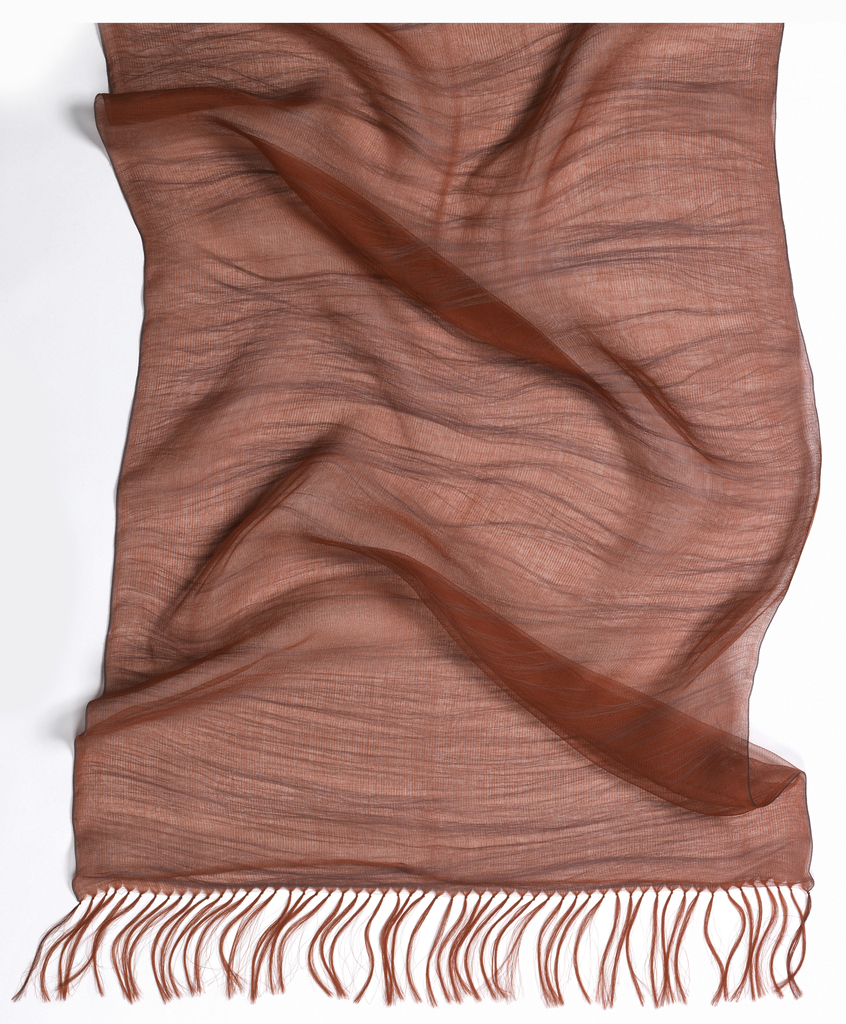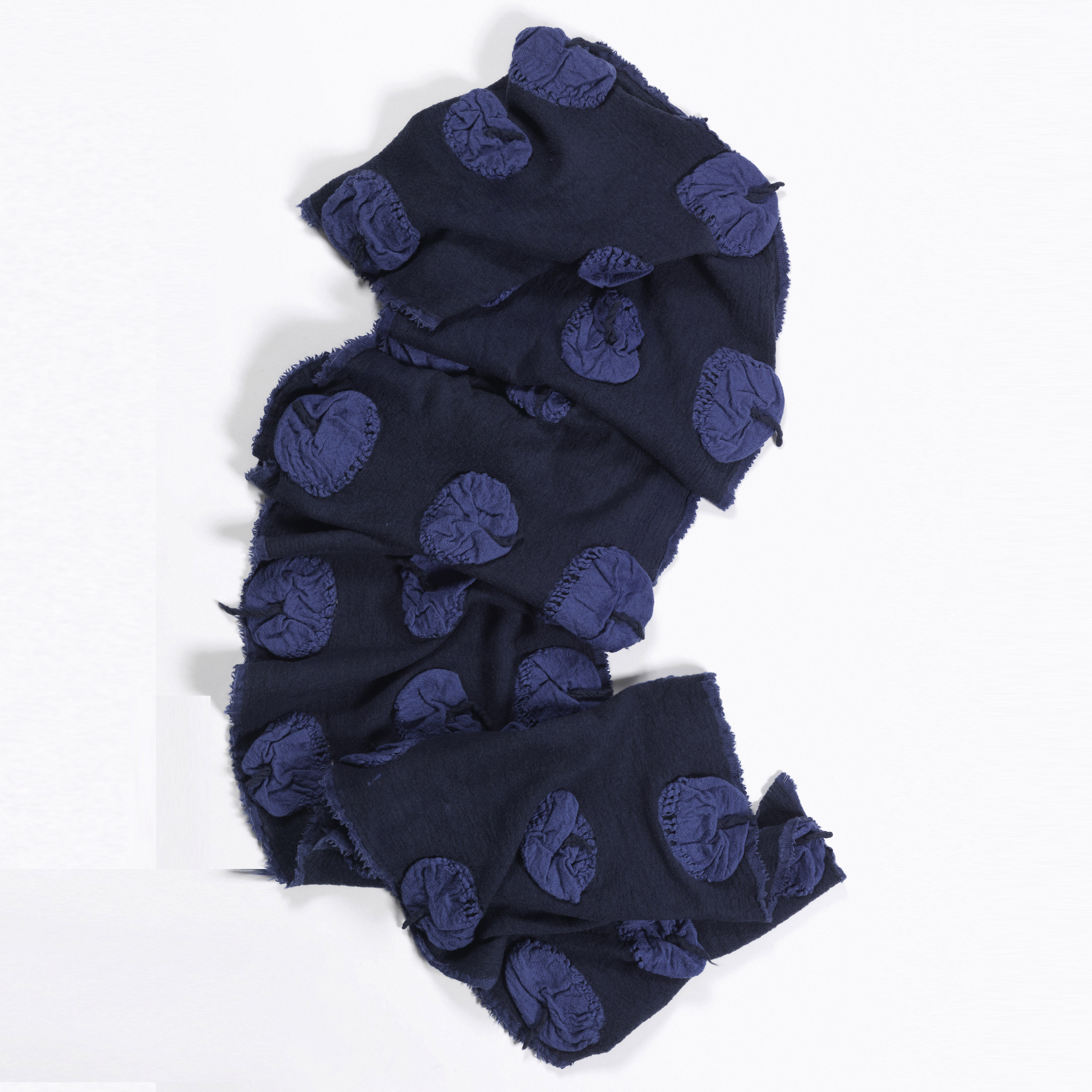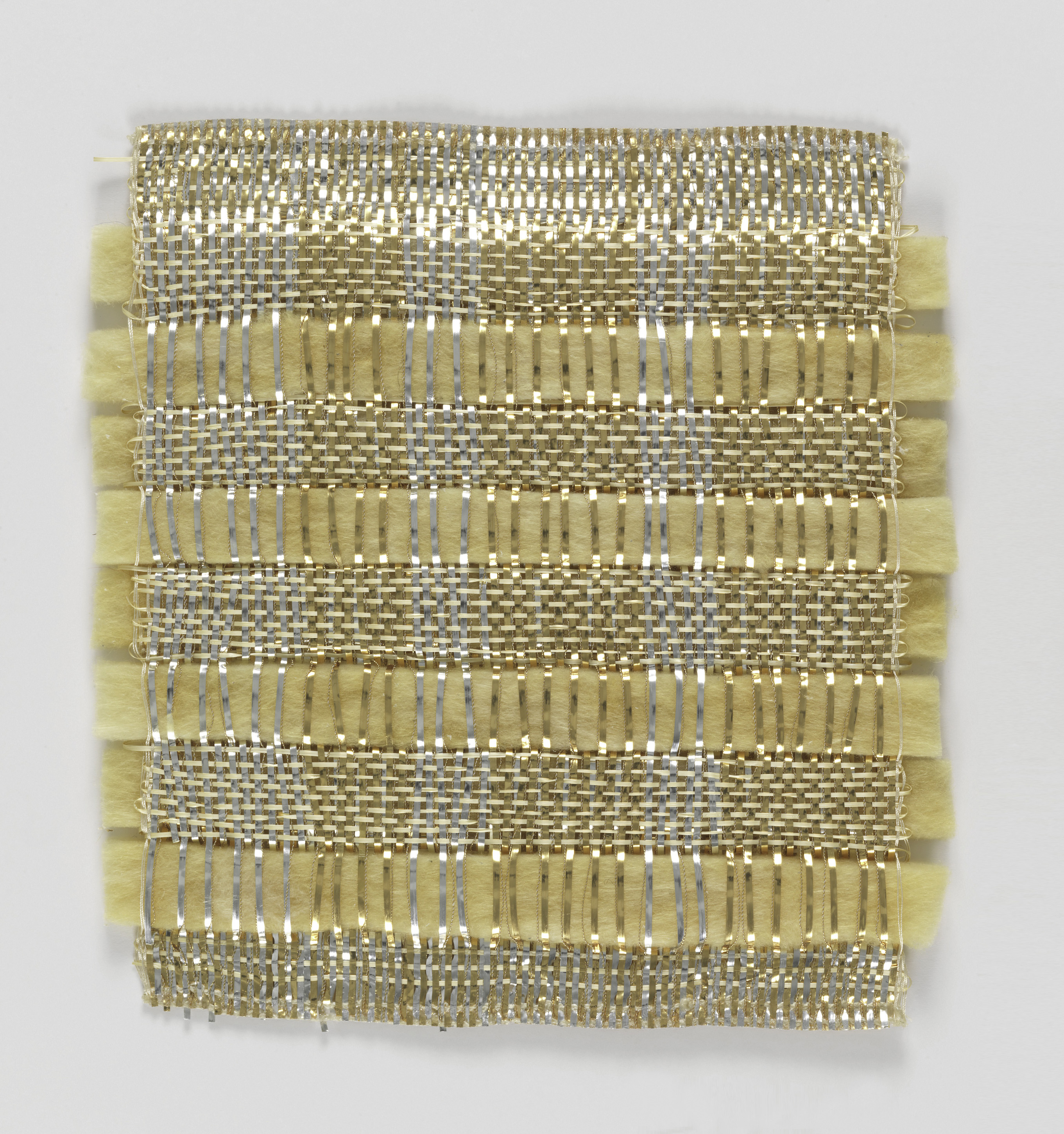Airy Weave is an excellent example of technologically innovative contemporary Japanese textiles. It is a triple layer silk fabric woven on a jacquard loom with a middle layer that has no warp, which allows the weft threads to float independently of the two outer layers. The resulting structure highlights the textile’s dimensionality and movement, as...
Jack Lenor Larsen (b.1927) is one of America’s most prolific and innovative twentieth century textile designers. He came to prominence in the 1950s with his distinctive hand-woven casement fabrics for the commercial contract market. But he was not surprised to later become best known for his sumptuous printed fabrics like Primavera. For Larsen, it was...
Circle Square II, designed by Hideko Takahashi in 1995, exemplifies varied experiments with the shrinking and cutting of a triple-layered cloth resulting in what seems to be a single layer with appliquéd pockets. Takahashi describes her three-layer textiles as a “two-layer cake.” She distinguishes the alternating blue-and-white colored layers that comprise the “cake” by cutting...
Though Mary Walker Phillips is recognized as an American fiber artist responsible for elevating the crafts of knitting and macramé to the realm of fine art, she was first and foremost, a weaver – and a wonderful one at that. This sample from 1960 appears simultaneously structurally precarious and visually charming. It is composed of...
Katsuya Fukushima (minibar, Washington, DC) discusses experimentation and iconoclastic new ways of presenting food.
Chef Grant Achatz of Alinea in Chicago, IL and designer/sculptor Martin Kastner discuss experimentation and iconoclastic new ways of presenting food.
Katsuya Fukushima (minibar, Washington, DC), Homaro Cantu (Moto, Chicago), and Grant Achatz and designer Martin Kastner (Alinea, Chicago) discuss experimentation and iconoclastic new ways of presenting food. Moderator: Darra Goldstein, co-curator, Feeding Desire






